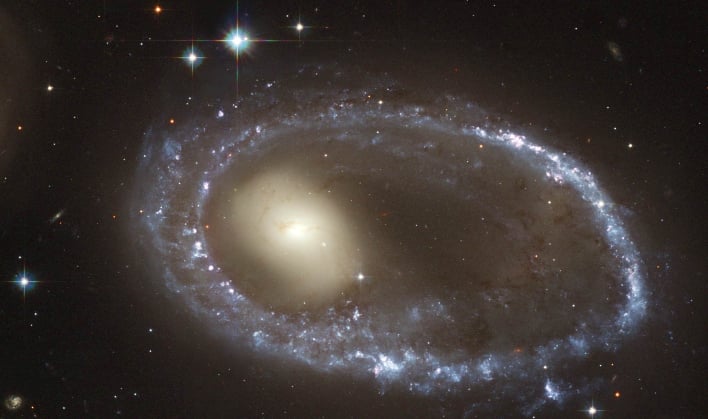Cyborg Method Of Human Intelligence And AI Discovers 40,000 New Ring Galaxies

The universe is filled with many awe inspiring galaxies, with some of them shaped like a ring. Ring galaxies are the result of smaller galaxies passing through larger ones, with their individual stars rarely coming into contact with one another. The ring-like shape is the result of the gravitational disruption caused by the collision of the two galaxies. Once this happens, interstellar gas and dust become compressed, resulting in a wave of star formation that moves out from the impact point like "a ripple across the surface of a pond," according to NASA. Ring galaxy AM 0644-741, captured by the Hubble Space Telescope, can be seen in the top image.
Dr. Mike Walmsley of the University of Manchester, and the group of volunteers with the Galaxy Zoo collaboration, have presented a new work describing how the "cyborg" approach resulted in finding an unprecedented 40,000 ring galaxies.

In a blog post on the Galaxy Zoo website, volunteers were thanked for their hard work that took place over a ten month period. Over 100,000 galaxies were looked at during that time, resulting in a million swipes. Dr. Walmsley stated, "I used the first half of your swipes to teach an artificial intelligence algorithm what a ring looks like. Then I set the algorithm searching a million DESI galaxies to find more rings."
Dr. Walmsley indicated that he then took the galaxies the AI thought might have rings and then asked the volunteers to check them. The two step approach allowed the team to search more galaxies more quickly, while having "human eyes vet" all of the discoveries.
Zoobot is not limited to searching for just ring galaxies, however. It is designed to be retrained over and over for new science goals. Dr. Walmsley remarked, "With Zoobot, humans and machines are collaborating to push the science of astronomy forward. We're helping other astronomers solve questions we never thought to ask."
Top Image Credit: Hubble Heritage Team/NASA

